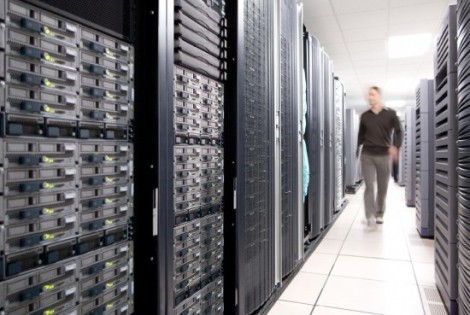Is Converged Infrastructure the Future of Cloud Solutions?Is Converged Infrastructure the Future of Cloud Solutions?
The idea is to build a cloud platform as efficiently as possible. So can the future of the cloud revolve around converged infrastructure?

The idea is to build a cloud platform as efficiently as possible. That means having hardware components in place capable of handling high user demand, great levels of multi-tenancy, and advanced resource controls. So, is this why so many companies are starting to look more at converged infrastructures for their cloud and virtualization platform?
There are some new players on the market. Numerous vendors are creating powerful node-based server platforms capable of great amounts of scale.
Nutanix, for example, says that their platform uses the same web-scale principles and technologies that power the IT environments of big, scale-out, cloud ecosystems as well as cloud providers like Google, Facebook and Amazon. It does make sense though. Your organization can quickly build a “cloud-in-a-box” platform with everything you need. Plus, you’re able to deploy a truly virtualization-ready environment which can scale on demand. It’s not a bad concept with quite a few benefits:
Lots of HA
Pretty solid performance per node
Elastic scaling
Availability of intelligent storage with deduplication and compression
Virtualization-ready management
Built-in optimizations like storage awareness and flash caching
Very rapid deployment time
So, outside of a few really awesome deployments, why are some organizations still hesitating around this “hyper” converged infrastructure? When deploying this type of platform, there is a bit of re-thinking that has to happen. First of all, you’re creating an environment that is now capable of storage plus compute. In some cases, this means completely getting rid of a SAN. Well, many organizations and data centers aren’t quite ready to do that yet.
Take a look at the Cisco UCS “unified” infrastructure. You have a platform that is also capable of storage and compute. However, you’re also able to throw in the networking components. Because of this, the end-user has options as far as which infrastructure to work with, which is great for the consumer. Another big aspect is how platforms like UCS can integrate with other technologies.
UCS can act as the network and fabric backplane.
UCS can then create an automation policy to distribute and entire workload.
That workload can be process by one of the UCS blades or by a Nutanix converged platform.
The amazing piece here is that processes can be distributed based on requirement, resources utilization, and user needs. In the above scenario an organization can offload all VDI processes to a Nutanix system while the UCS chassis handles data base operations and application delivery.
As organizations grow and evolve, there are a number of growing use-cases where converged systems are the right platform to deploy.
Branch offices
Micro-clouds
Virtual applications/desktops
Some organizations can even use a converged platform for big data analytics on Hadoop. So, adoption is happening, but we’re not seeing this platform replace existing components within the data center or cloud. Rather, we’re seeing an interesting trend happen.
These converged systems are acting as direct compliments to current platforms.
Converged systems are capable of providing specific services that the rest of the data center does not have to be burdened by.
Doesn’t it make sense though? You’ve got all your resources under one roof and you can dynamically provision and de-provision workloads. Consider some of the trends from the latest Cisco Global Cloud Index Report: data center virtualization and cloud computing growth are definitely in the forecast.
By 2018, more than three quarters (78 percent) of workloads will be processed by cloud data centers; 22percent will be processed by traditional data centers.
Overall data center workloads will nearly double (1.9-fold) from 2013 to 2018; however, cloud workloads will nearly triple (2.9-fold) over the same period.
The workload density (that is, workloads per physical server) for cloud data centers was 5.2 in 2013 and will grow to 7.5 by 2018. Comparatively, for traditional data centers, workload density was 2.2 in 2013 and will grow to 2.5 by 2018.
Global data center IP traffic will nearly triple (2.8-fold) over the next 5 years. Overall, data center IP traffic will grow at a compound annual growth rate (CAGR) of 23 percent from 2013 to 2018.
As the data center continues to become more optimized, I won’t be surprised if we see more of these hyper-converged platforms emerging within micro-cloud and data center deployment models.
About the Author
You May Also Like









